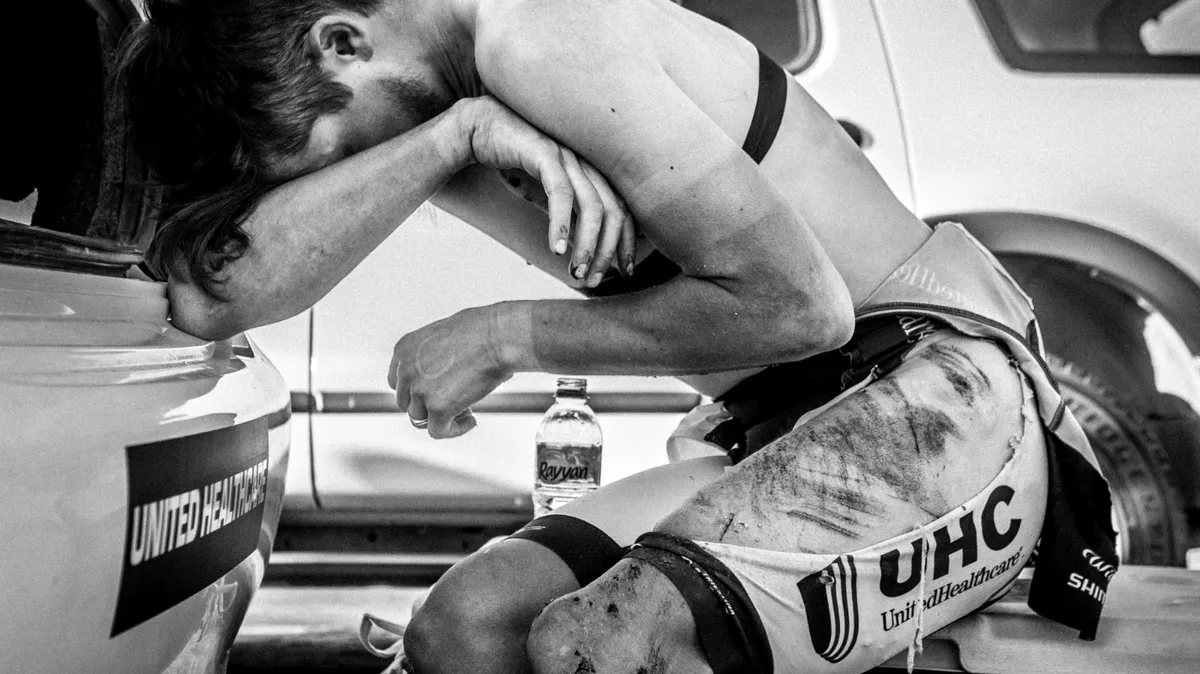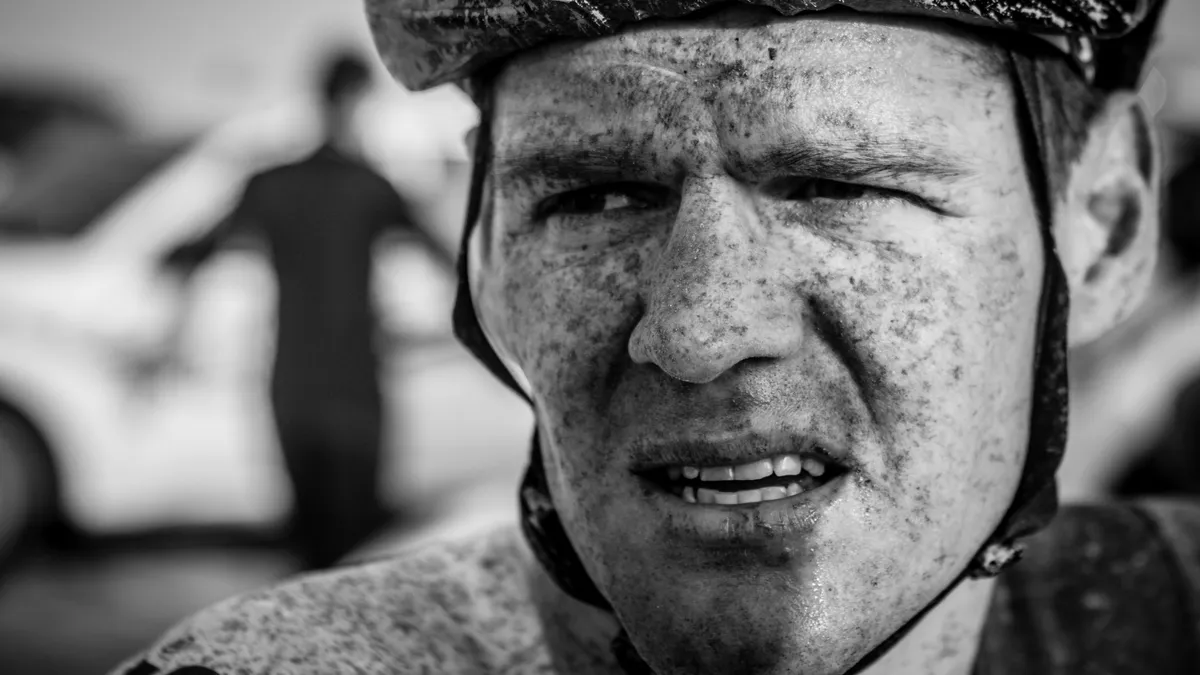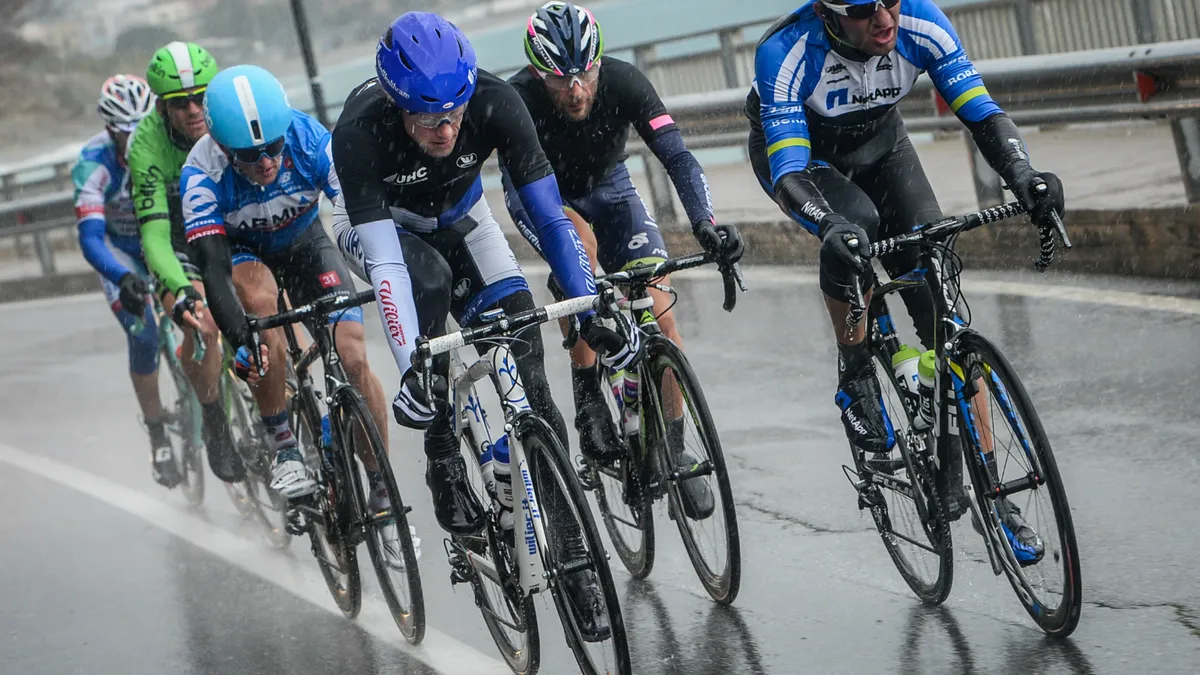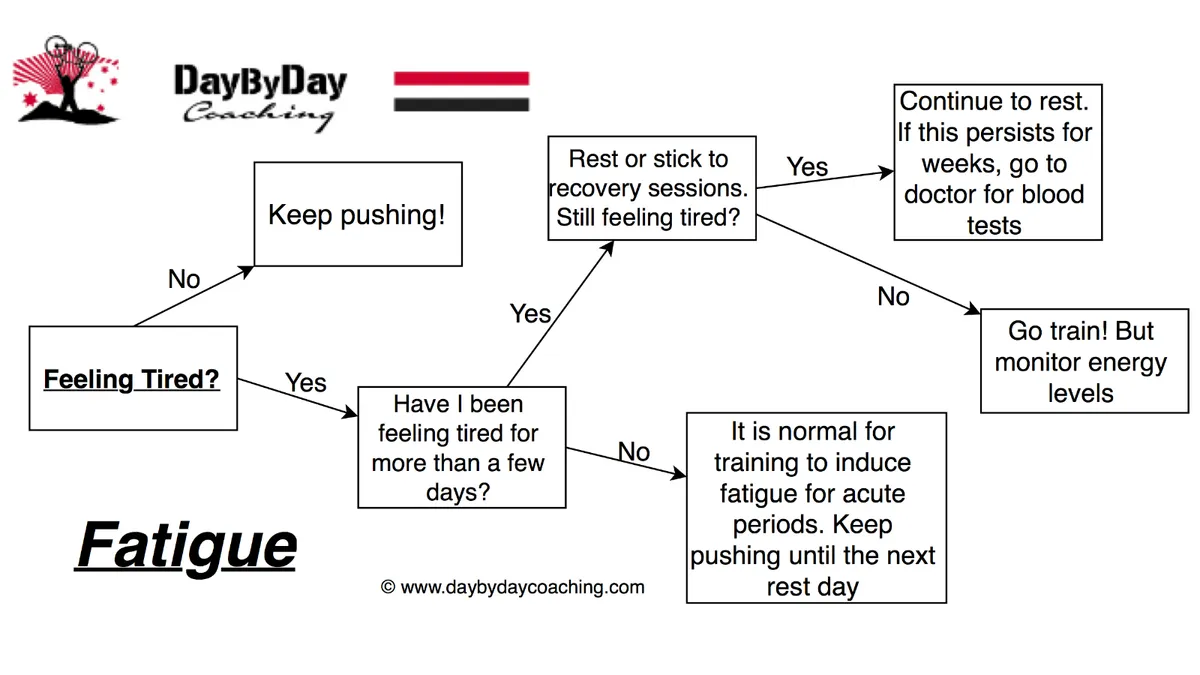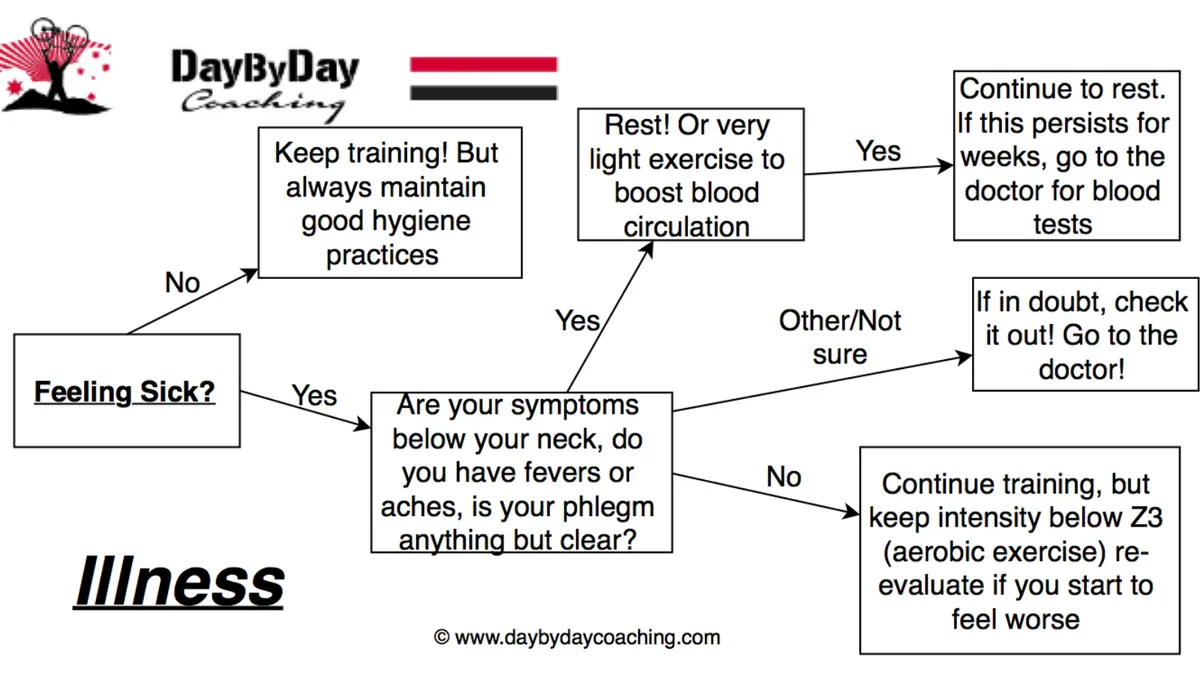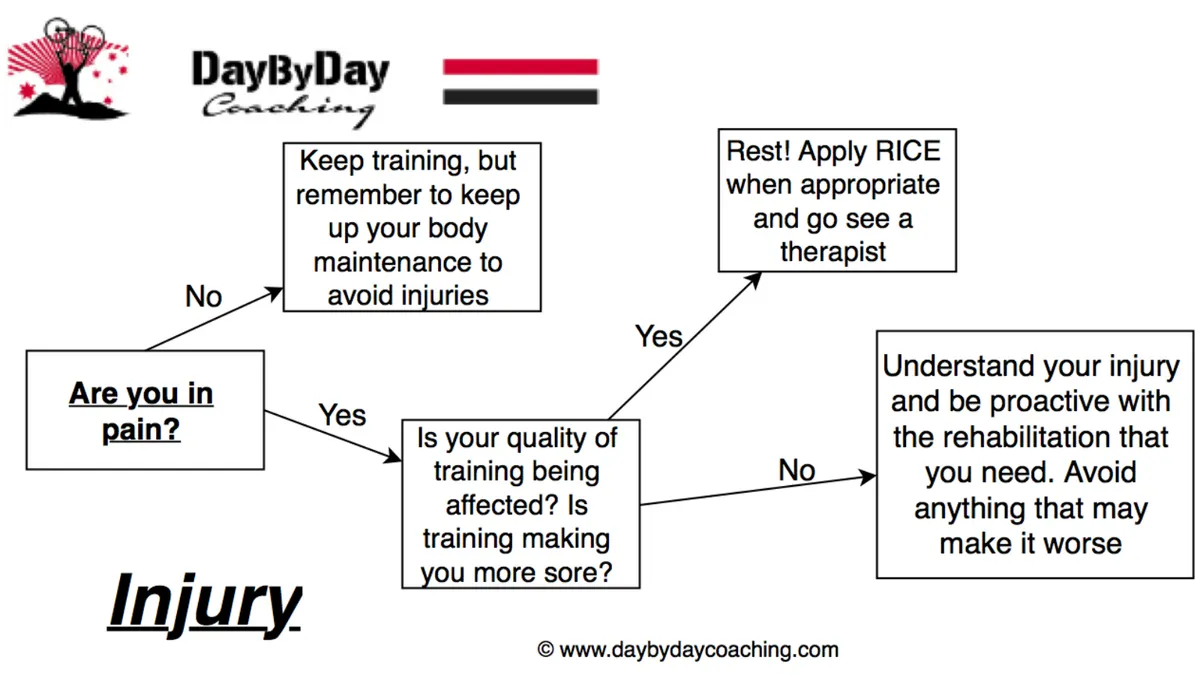Former pro Ben Day's inspiration for the Training Day by Day articles comes from his own experience, as well as coaching his athletes - who range from recreational riders to WorldTour professionals to Ironman athletes. Day believes that every single athlete undergoing a training cycle needs to better understand when to push through fatigue, illness or injury and when they should rest and recover. Below, Day discusses some guidelines in making the right decisions.
Fatigue
The basis for improving your form is to train hard enough to break the body down, which the body then, during a period of rest, responds by creating physiological adaptations so that you come back stronger and more resilient. Note the phrase “during a period of rest”. Training hard digs a necessary hole. If you dig too big a hole without sufficient rest these adaptations won’t take place, you won’t be able to get out of that hole and frankly you are wasting your time and energy. You will be on the road to overtraining.
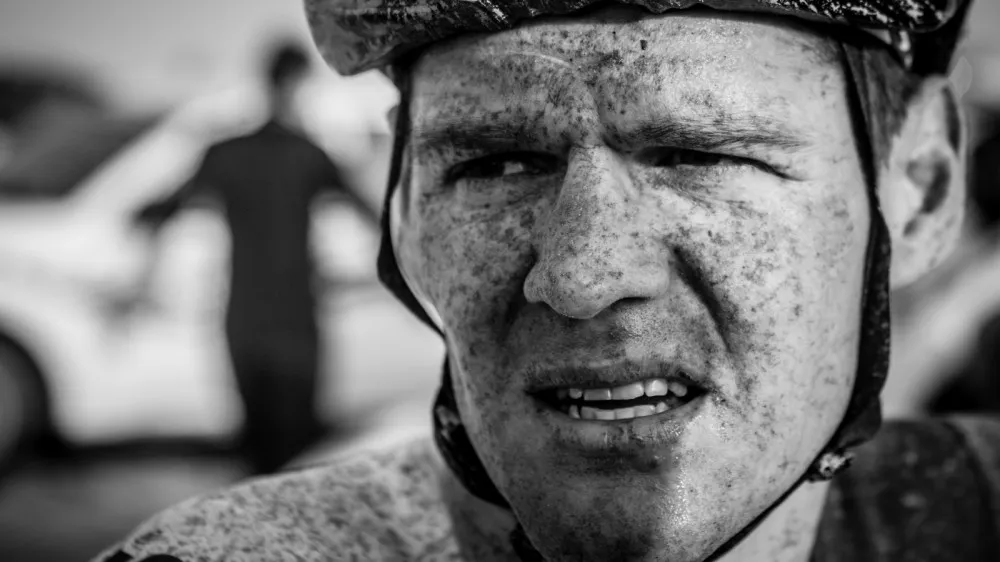
- Include one to two rest days every week and periodise your training so that you push forward, stop and rest – and then push forward again. Imagine this is like climbing a massive flight of stairs with a threshold on which to catch your breath at regular intervals.
- Listen to your body! My first article, “The Grey” talks about this. Listen to your body, record your sensations and mood in your training diary, such as TrainingPeaks. Learn from this, extrapolate out the conclusions and start making informed decisions about when to turn back home to curl up in bed or when to push through.
- Monitor your RPE (Rate of Perceived Exertion). If that session you did last week was a five out of ten and this week it’s a eight out of ten, you’d better consider taking a rest day.
- Power is great, but heart rate is even better in this scenario! Don’t ditch your heart rate strap because you have a new power meter. That power data is even more beneficial now that you have heart rate with which to compare it against. If your heart rate is ten beats lower than what you normally see at this intensity, it’s time to sit on the couch.
- As you are monitoring your power trends, if you see a strong plateau in the improvement curve, rest and then push again another day.
- Do not try to overcome a poor performance with an abusive session flogging yourself out on the road - calmly analyze all of the factors and determine the cause.
- If you feel chronically fatigued, get some blood tests done. Parameters to start with are: CBC, metabolic, iron and hormone panels and cortisol. There are other markers which can look deeper into the cause of the problem.
Illness
Try as you might to stay healthy, but when you’re pushing hard with your training load, there are periods when your immune system is compromised. A sick child, dirty public transport, or a rainy race - there are many germs that can get in and knock you down. Should you continue training, and at what intensity?
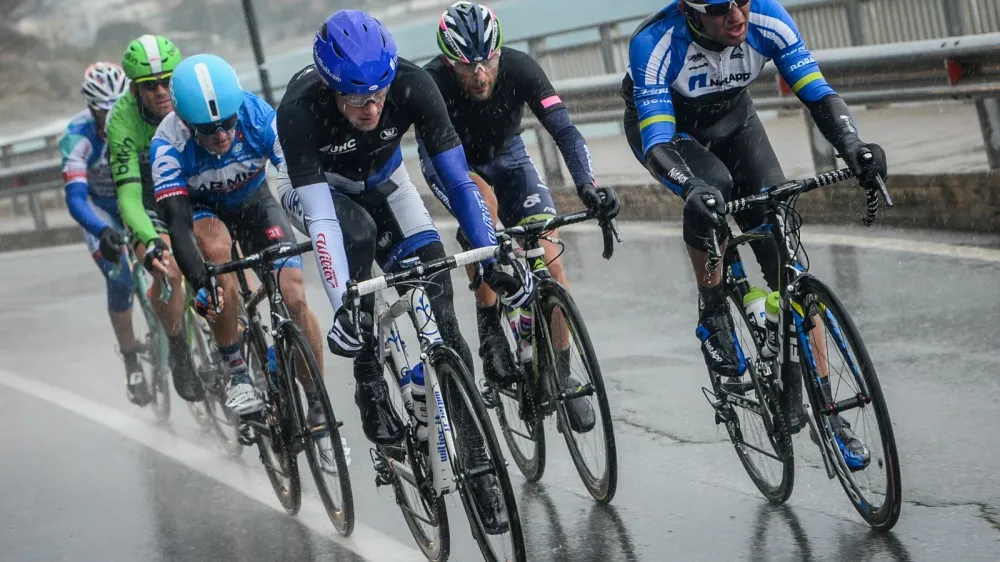
A rainy race or even a rainy ride can be enough to get you sick
- Fevers and aches = stay in bed! Complete rest is what you need.
- If your symptoms are below your neck, i.e. a chesty cough, then complete rest is best. Although, 20 or 30 minutes of light exercise such as walking or easy riding on the trainer can help boost circulation and recovery.
- If your symptoms are in your neck and above, you should be ok to keep training but keep your intensity below zone 3 (aerobic activity - breathing a little deeper but still able to hold short conversations) and reduce the training load. What you can hope for at this point is to maintain your fitness for when you are healthy again. Be sure to stay warm!
- What is the color of your phlegm? If you’re emitting fluids that are green or yellow, you are still fighting an infection. If you exercise, keep it real easy. If it’s clear, conservatively increase your training load over a few days to ease back into the training cycle.
- If in doubt, check it out! Go see a sports-minded doctor and always err on the side of caution. Remember that rushing back into hard training too quickly can cost you a lot more time than what it would have been if you were just a little more patient.
Injury
- Decisions need to be made around injuries in a sensible manner. You need to ask yourself, will training through that injury slow down your rehabilitation time to the point that affects your future performances?
- Make sure that you understand what your injury is and what it needs in order to repair.
- If exercising with an injury makes it feel worse, you need to rest and get assistance from a therapist.
- Generally, with no broken bones or torn ligaments, recovery from a crash on your bike is improved by continuing light exercise, increasing blood flow and maintain range of motion.
- The latest in first-aid recommendation for soft tissue injuries is “PRICE” - Protection, Rest, Ice, Compression, Elevation.
Make Good Decisions
In order to make a good decision on how to handle an issue that could impact your training begins with understanding what it is. With this information, take away the emotion and calculate what steps will ultimately get you back into top form in the shortest period of time. Being a “warrior” and pushing through it wins you no prizes if consequently you are out of action for longer. In the gallery, you will find some decision flowcharts, which you can also download and print out for reference here.
Previous Day by Day training columns
- How to cycle in extreme weather stage 10
- Training advice for the off season stage 9
- Descend like a pro stage 8
- There is no improvement without recovery stage 7
- Five exercises to improve your pedalling efficiency stage 6
- Climb like a pro stage 5
- Why positive thinking is important stage 4
- Nine tips for mental strength stage 3
- Nine golden rules for training stage 2
- The Grey: Improving your performance stage 1
Ben Day started DaybyDay Coaching in 2008 to share his experience as a 13-year international professional cyclist with endurance athletes of all levels. An ex-National Champion, he recently retired from racing professionally with the UnitedHealthcare Pro Cycling team to focus on delivering the DaybyDay Coaching service to both amateur athletes and professionals, first time racers, to WorldTour professionals.
In future articles, Ben Day and Chris Baldwin will continue to share with you methods for improving your cycling, whether mental, physical or technique related. Do you have any tricks that you use or questions for future articles? Share them with the guys on Twitter–their handle is @daybydaycoachin and join the DaybyDay Coaching community.

